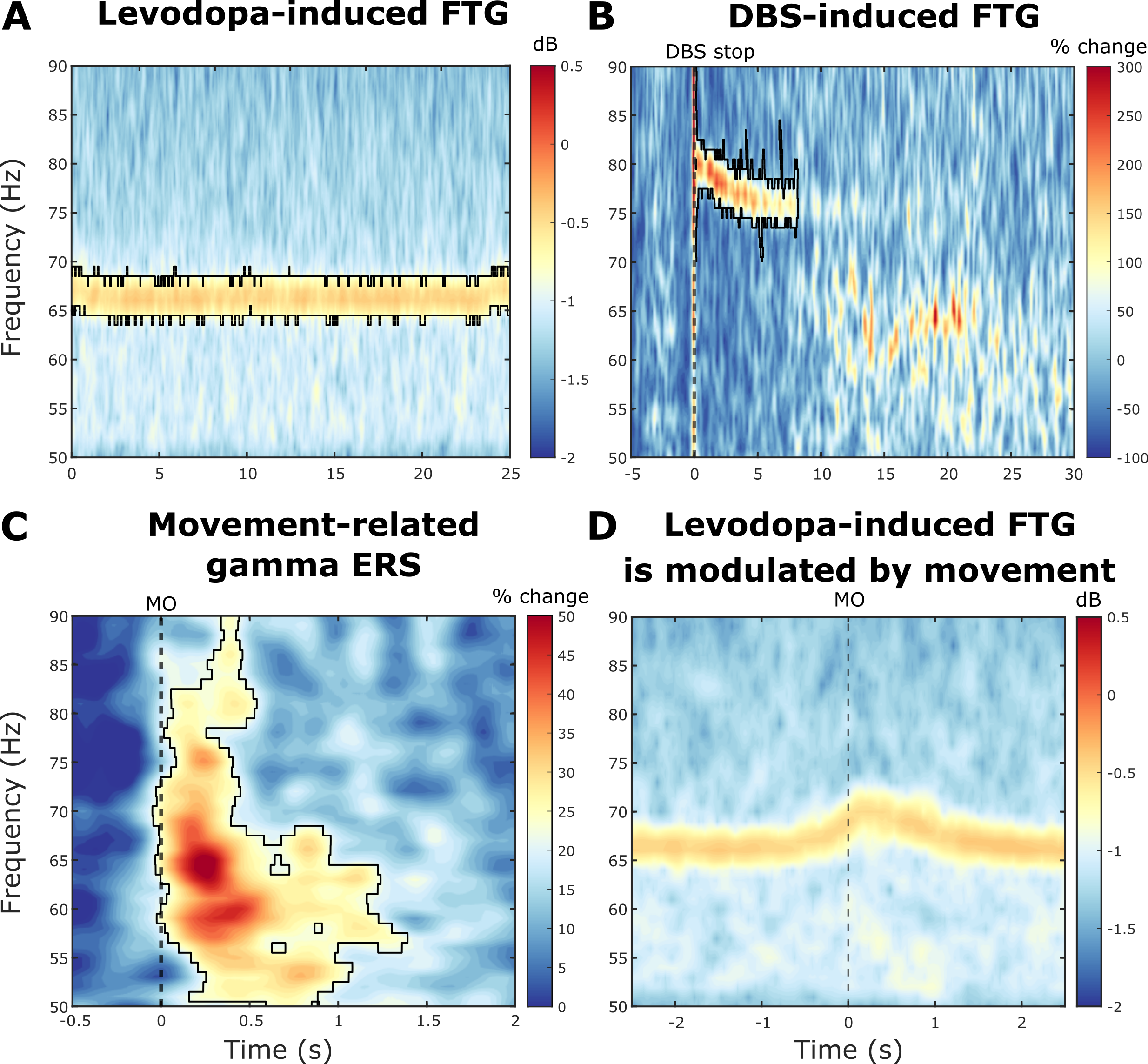Finely-tuned gamma oscillations: Spectral characteristics and links to dyskinesia.
In this work, we compare and contrast special patterns of brain waves associated with voluntary movements or medication and brain stimulation therapies for Parkinson’s. These brain waves have a similar frequency but also many differences. Here, we discuss the pros and cons of using these brain wave patterns as feedback signals to customise and reduce the side-effects of brain stimulation therapy.
Gamma oscillations comprise a loosely defined, heterogeneous group of functionally different activities between 30 and 100 Hz in the cortical and subcortical local field potential (LFP) of the motor network. Two distinct patterns seem to emerge which are easily conflated: Finely-tuned gamma (FTG) oscillations - a narrowband activity with peaks between 60 and 90 Hz - have been observed in multiple movement disorders and are induced by dopaminergic medication or deep brain stimulation (DBS). FTG has been linked with levodopa or DBS-induced dyskinesias, which makes it a putative biomarker for adaptive DBS. On the other hand, gamma activity can also present as a broad phenomenon (30-100 Hz) in the context of motor activation and dynamic processing. Here, we contrast FTG, either levodopa-induced or DBS-induced, from movement-related broadband gamma synchronisation and further elaborate on the functional role of FTG and its potential implications for adaptive DBS. Given the unclear distinction of FTG and broad gamma in literature, we appeal for more careful separation of the two. To better characterise cortical and subcortical FTG as biomarkers for dyskinesia, their sensitivity and specificity need to be investigated in a large clinical trial.

2022. Exp Neurol, 351:113999.